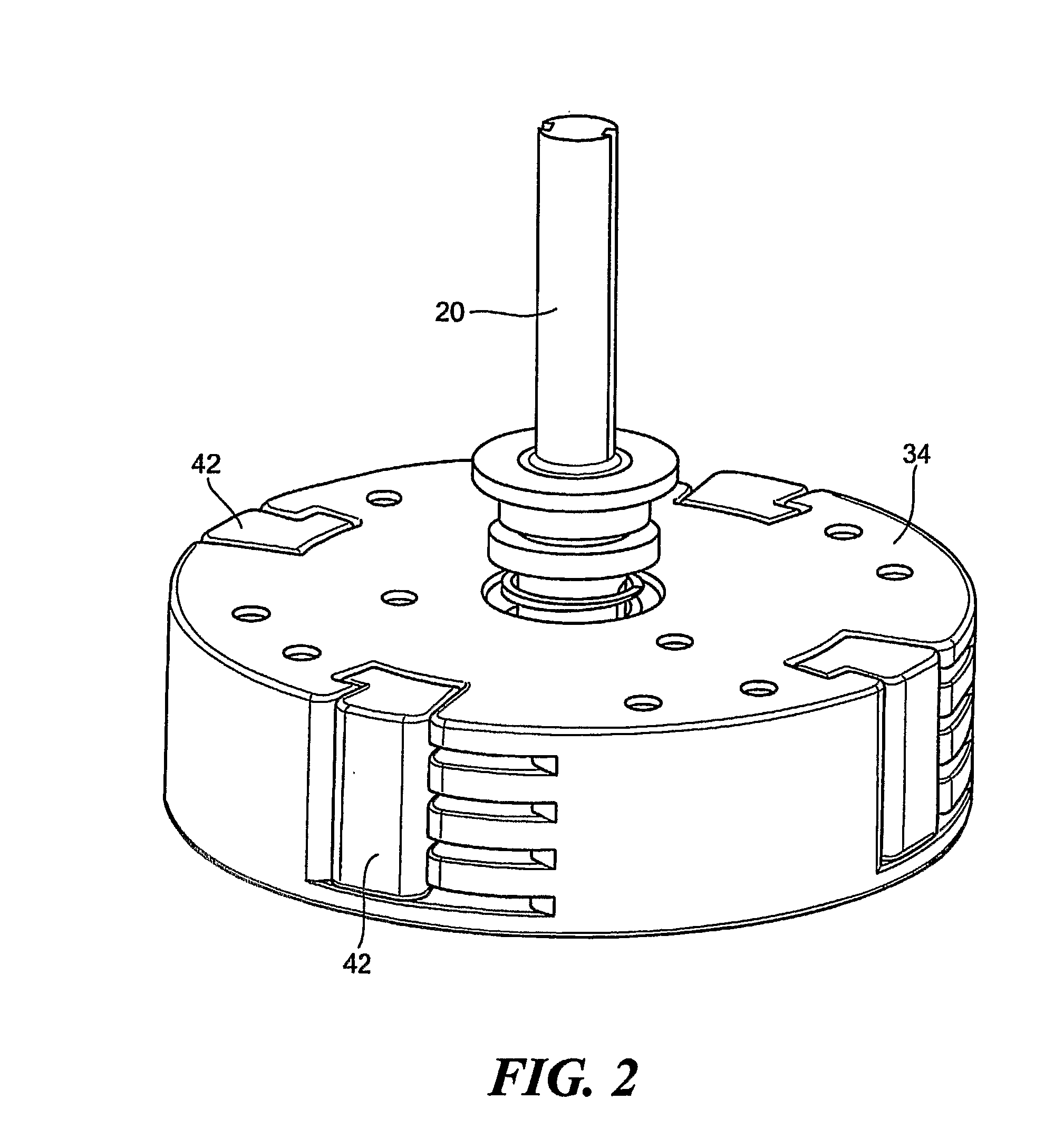Electro-Rheological Fluid Brake and Actuator Devices and Orthotic Devices Using the Same
- Summary
- Abstract
- Description
- Claims
- Application Information
AI Technical Summary
Benefits of technology
Problems solved by technology
Method used
Image
Examples
Embodiment Construction
[0047] Electro-rheological fluids experience changes in Theological properties, such as viscosity, in the presence of an electric field. The fluids are made from suspensions of particles on the order of 0.01 to 0.1 μm in size in an insulating base fluid, such as an oil. The volume fraction of the particles is generally between 20% and 60%. The electro-rheological effect, sometimes called the Winslow effect, is thought to arise from the difference in the dielectric constants of the fluid and particles in the electro-rheological fluid (ERF). In the presence of an electric field, the particles, due to an induced dipole moment, form chains along the field lines. The induced structure changes the ERF's viscosity, yield stress, and other properties, allowing the ERF to change consistency from that of a liquid to something that is viscoelastic, such as a gel, at response times on the order of milliseconds. ERFs can apply very high electrically controlled resistive forces while their size (...
PUM
 Login to View More
Login to View More Abstract
Description
Claims
Application Information
 Login to View More
Login to View More - R&D
- Intellectual Property
- Life Sciences
- Materials
- Tech Scout
- Unparalleled Data Quality
- Higher Quality Content
- 60% Fewer Hallucinations
Browse by: Latest US Patents, China's latest patents, Technical Efficacy Thesaurus, Application Domain, Technology Topic, Popular Technical Reports.
© 2025 PatSnap. All rights reserved.Legal|Privacy policy|Modern Slavery Act Transparency Statement|Sitemap|About US| Contact US: help@patsnap.com



